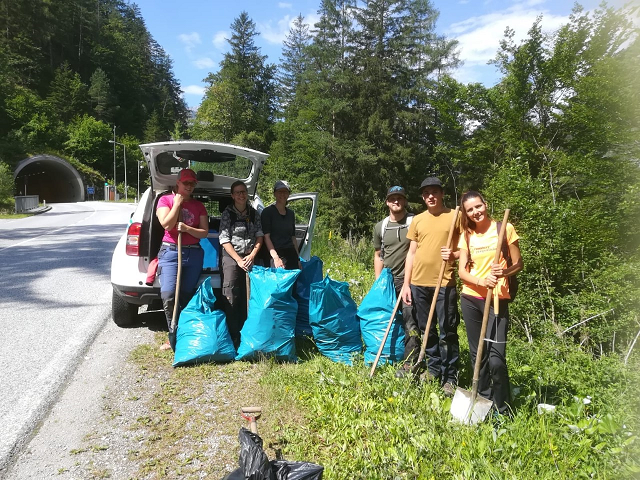The area was selected as a reference area for the HBLFA Raumberg-Gumpenstein's MonitorNeophyten project.
Equipped with a spade and shovel and of course accompanied by the baby elephant, the removal work began early in the morning to beat the heat. Rhizomes were dug up to a depth of up to one meter over an area of approximately 100m2 in order to prevent further spread of this highly invasive plant species. The area has always been worked on at the same time over the past two years and the effort has clearly paid off. The spread of Japanese knotweed is inhibited by continuous cultivation. The measures made it possible to reduce the size from around two meters high in the year it was first sighted in 2018 to around 30-50 cm. This time it was even possible to remove a large part of the root system, with the longest rhizomes dug up being three meters long. A total of nine bags of 80 liters each of plant material were removed and taken to the waste management association in Liezen for professional disposal.
In the fall, a follow-up inspection is carried out by a National Park employee to remove any remaining plants.







